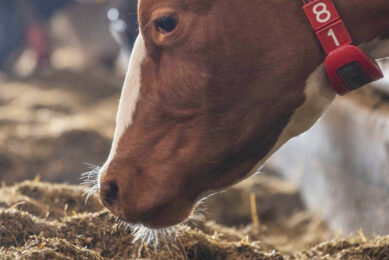Spain on a quest to find new dairy farmers

Calls for more investment in the Spanish dairy industry have been made to attract new farmers and ensure continuity of raw milk supply to satisfy future demand. To gain a better understanding of the dairy sector in Spain, we spoke to Luis Calabozo, managing director of FeNIL, the Spanish Dairy Industries Federation.
Like in many other countries, dairy farmers in Spain have been leaving the industry, which has raised concerns about having enough produce in the future to feed a growing population. Currently, there are many ongoing debates in Spain about the pricing structure for milk, and how to keep the country competitive in both European and international dairy markets.
Can you break down the current production figures in Spain?
To understand the Spanish dairy sector, it is important to analyse milking cows but also milking ewes and goats. According to the 2023 figures from the Spanish Ministry of Agriculture, Fisheries and Food, there were 10,320 farmers with 780,000 dairy cows that produced 7.33 million tonnes of milk. Around 2,770 farmers produced 486,000 tonnes of sheep’s milk and 4,035 farmers produced 426,000 tonnes of goat’s milk.
What are the current issues affecting dairy farming and production in Spain?
Beyond the traditional short-term debate on raw milk price negotiations between farmers and processors, nowadays the first point on the agenda is the future availability of raw milk to accomplish the dairy compromise with society to guarantee the availability of this essential food to citizens. The dairy sector’s key point in Spain is the need for more raw milk, produced in an economically and environmentally sustainable way. Furthermore, it must be competitively priced to offer consumers an attractive choice of Spanish milk for drinking, as well as cheeses and yoghurts.
And, at the same time, Spain should be able to participate in fair conditions in the international dairy markets. It is therefore necessary to attract new generations of professional farmers to entrepreneurial milk production models in the size, management and level of investment that can provide a socioeconomic life similar to that offered by urban activities. This holistic approach requires structural public investments in rural areas beyond the dairy sector.
From FeNIL point of view, how is the dairy industry performing right now?
In the same way, and from our point of view as processors, the main concern we have for the future is how to assure the supply of Spanish raw milk to the industries. It is true that the number of farmers decreased in recent years, but the volume of raw milk produced seems to have stabilised. This means we are transitioning to a new model of milk farming in our country. Regional, national and European authorities should promote conditions to attract young people to work in the rural areas, not only via economic incentives but also by providing social conditions comparable to those available in urban areas.
Furthermore, the transition to production systems adapted to the requirements of consumers, in terms of environmental sustainability, should be aligned with the price paid for European dairy food products. Finally, the situation of severe drought we have in Spain will also define the future of our dairy sector.
Can you tell us about dairy produce exports from Spain and dairy imports into Spain?
In 2023, Spain imported 890,000 tonnes of dairy products and exported a total of 510,000 tonnes, so our dairy trade balance is negative. Our dairy trade balance was traditionally negative due to the limits on milk production until 2015, imposed by the EU quota system. But in 2023, the gap between imports and exports increased after almost a decade of continuous growth in production and exports.
Concerning imports, more than 363,000 tonnes were cheeses from EU countries, such as Germany and the Netherlands. We also imported 116,000 tonnes of raw milk from countries closer to us such as France and Portugal. In terms of exports, the main categories exported were Spanish cheeses and yoghurts. Our cheeses made with sheep’s and goat’s milk, for example, Manchego, are appreciated abroad, not only in EU countries, but also in third countries including the US, the UK and Australia.
What is the average milk price paid to Spain’s dairy farmers right now?
Traditionally, prices paid to Spanish farmers were on par with the rest of the EU. However, last year, farmers received the highest prices in our history, making Spain the country with the highest dairy prices in the Union. In the short term, that could be positive for farmers, but it does not make sense in the global market. In fact, the increase in imports is partly due to the lack of competitiveness. Obviously we want everybody involved in the milk supply chain to receive a fair value for their work, but as already mentioned, we operate in the global market and we have to compete with other producer countries.
How have droughts affected the dairy industry, last year and now?
Climate change is a reality, so the whole world should reflect on how to produce food for a growing global population. Indeed, drought is one of the main concerns of the agri-food sector in Spain and Mediterranean countries, and not only for dairy. So, we have to focus our efforts in how to produce big volumes with less water. Definitely, the availability of water will become an important driver for the future, so many milk farms will be relocated into wet regions.
Can any improvements be made to the dairy industry in Spain as a whole?
During the past few years, Spanish dairy industries made a considerable effort to optimise the use of water but, of course, it is possible to improve even more. For instance, the production of liquid milk requires water, so we are discussing with our authorities how to re-use water in some industrial processes. Our authorities should prioritise the use of water to produce food versus the use of water for other purposes.
Is consumer behaviour a factor in your dairy market going forward?
Yes, the role of consumers is important. When we try to analyse agri-food sectors, consumer behaviour is usually missed, despite the influencing power they have, mainly driven by the role of retailers as choice prescribers. Of course, it is extremely important that consumers know the value of the food they eat and how important it is to pay fair prices to everybody involved in the chain.










